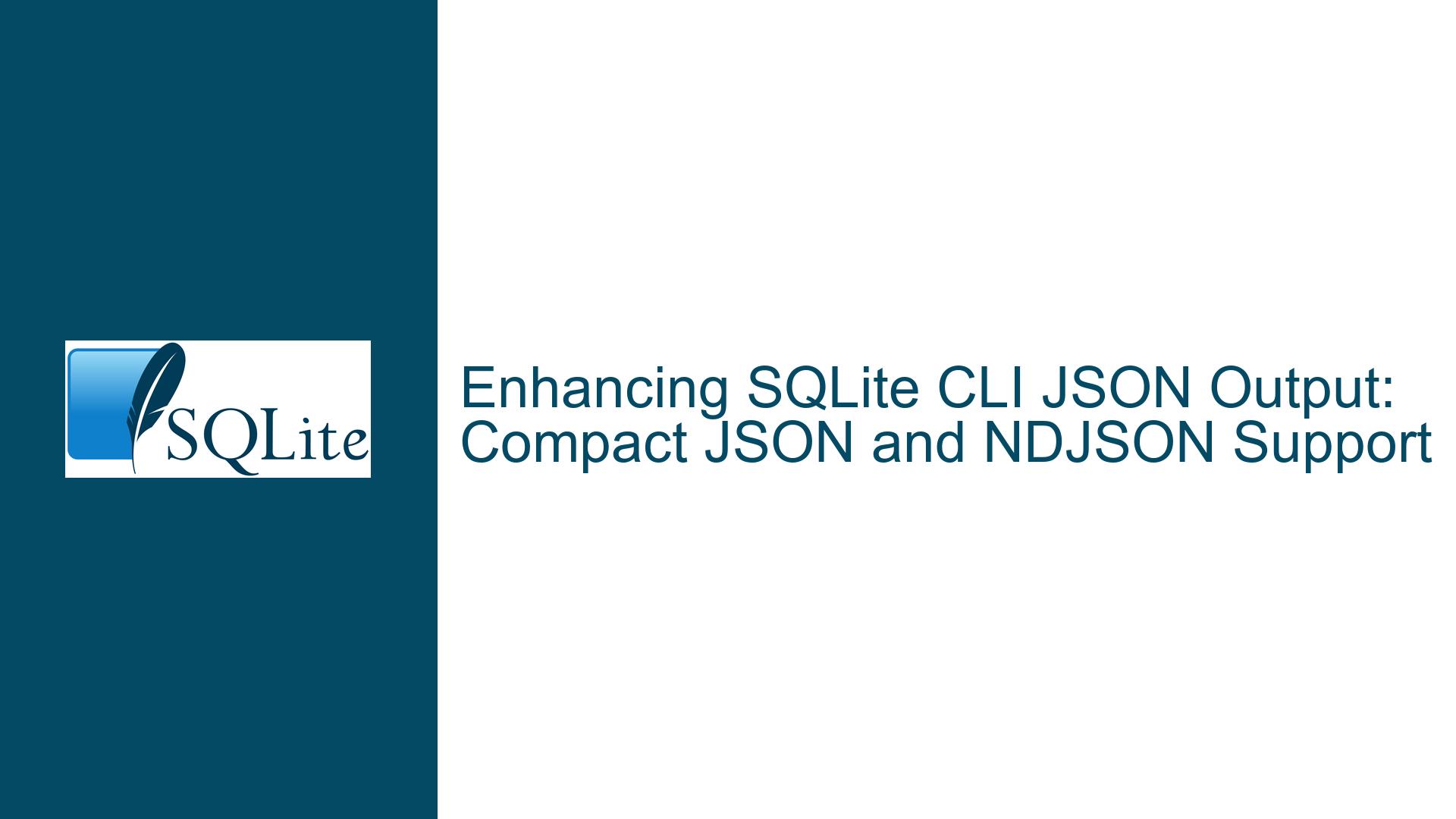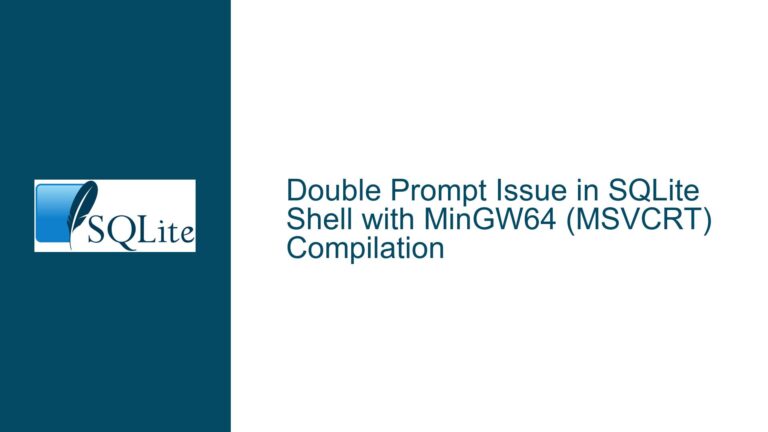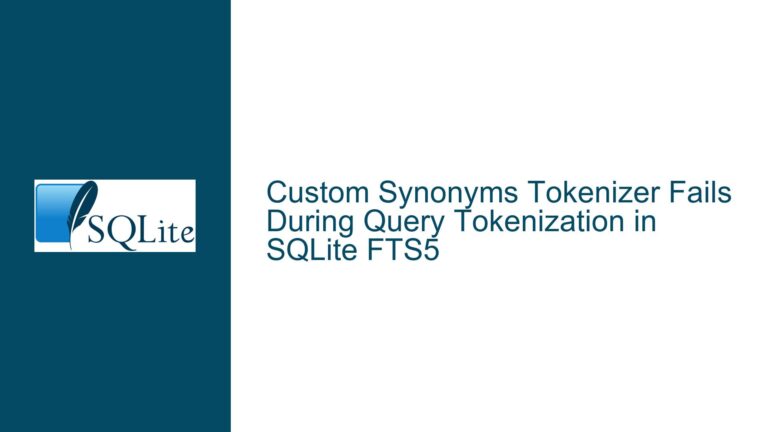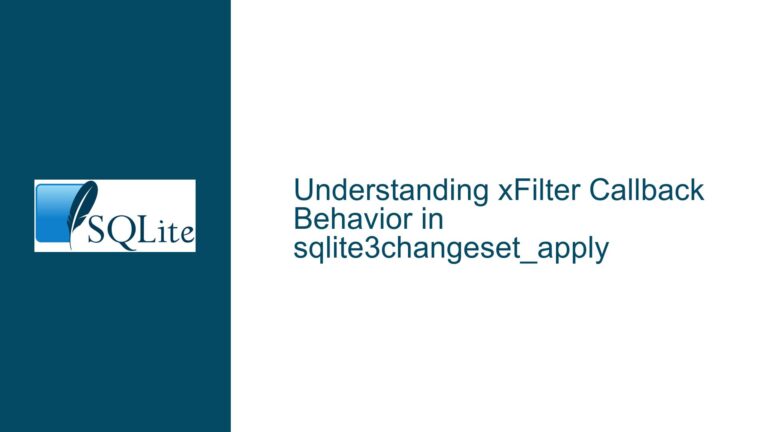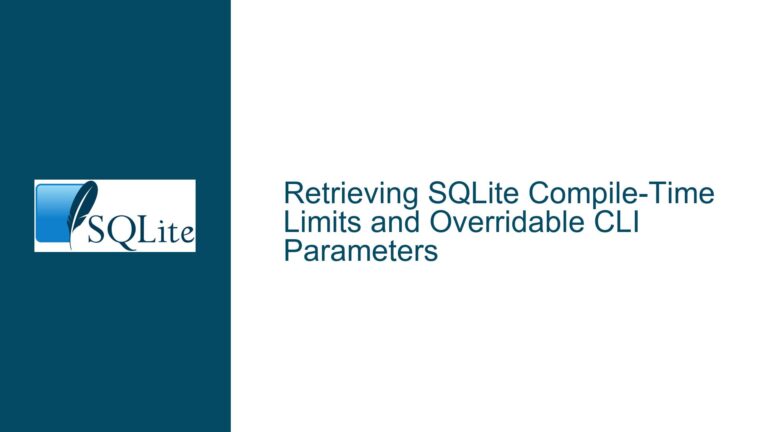Enhancing SQLite CLI JSON Output: Compact JSON and NDJSON Support
The Need for Compact JSON and NDJSON in SQLite CLI
The SQLite command-line interface (CLI) is a powerful tool for interacting with SQLite databases, offering various output modes such as CSV, columnar, and JSON. However, as data processing needs evolve, particularly in the context of streaming large datasets, the current JSON output mode may not always suffice. Two specific JSON formats—Compact JSON and NDJSON (Newline Delimited JSON)—have emerged as valuable alternatives for efficient data streaming and processing. Compact JSON simplifies JSON output by omitting field names and returning arrays of values, while NDJSON streams JSON objects as individual lines, making it ideal for handling large datasets. This post delves into the technical nuances of these formats, their potential integration into the SQLite CLI, and the challenges and solutions associated with their implementation.
Compact JSON and NDJSON: Technical Overview and Use Cases
Compact JSON and NDJSON are both JSON-based formats designed to optimize data streaming and processing. Compact JSON, as the name suggests, is a more concise version of JSON where field names are omitted, and only the values are returned in an array format. This reduces the size of the JSON output, making it more efficient for transmission over networks or for storage. NDJSON, on the other hand, is a format where each JSON object is separated by a newline character. This allows for the streaming of JSON objects one at a time, which is particularly useful when dealing with large datasets that cannot be loaded into memory all at once.
The use cases for these formats are numerous. In data pipelines, where data is often streamed between different systems, NDJSON is particularly useful because it allows for the processing of data as it is being received, rather than waiting for the entire dataset to be loaded. Compact JSON, with its reduced size, is beneficial in scenarios where bandwidth is a concern, such as in mobile applications or when transmitting data over slow networks. Both formats are also useful in logging and monitoring systems, where data needs to be written and read in a continuous stream.
In the context of the SQLite CLI, the integration of these formats would allow users to stream data directly from the database to other systems without the need for intermediate processing steps. For example, a user could stream data from a SQLite database to a data warehouse or a real-time analytics system using NDJSON, or transmit data to a mobile application using Compact JSON. This would simplify the data pipeline and reduce the overhead associated with data transformation and transmission.
Challenges in Implementing Compact JSON and NDJSON in SQLite CLI
While the benefits of integrating Compact JSON and NDJSON into the SQLite CLI are clear, there are several challenges that need to be addressed. One of the primary challenges is the lack of standardization for Compact JSON. Unlike NDJSON, which has a well-defined specification and is widely supported by various tools and libraries, Compact JSON is not standardized. This lack of standardization could lead to compatibility issues, as different systems may interpret Compact JSON differently. Additionally, the SQLite development team is cautious about adding support for non-standard formats, as they would be committed to maintaining that support indefinitely.
Another challenge is the potential impact on the performance of the SQLite CLI. Adding support for new output formats would require additional code to handle the formatting of the output, which could increase the complexity of the CLI and potentially slow down its performance. This is particularly concerning for NDJSON, where the CLI would need to handle the streaming of data in real-time, which could be resource-intensive for large datasets.
Furthermore, there is the question of how to integrate these new formats into the existing CLI interface. The current .mode command in the SQLite CLI is used to set the output mode, such as CSV or JSON. Adding new modes for Compact JSON and NDJSON would require careful consideration of how these modes interact with the existing ones, and how they can be made intuitive for users. For example, should there be separate modes for Compact JSON and NDJSON, or should they be combined into a single mode with options to switch between them?
Solutions and Best Practices for Integrating Compact JSON and NDJSON
To address the challenges associated with implementing Compact JSON and NDJSON in the SQLite CLI, several solutions and best practices can be considered. First, to mitigate the issue of standardization, the SQLite development team could consider adopting NDJSON, which is already well-supported and standardized. This would provide users with a reliable and widely-accepted format for streaming JSON data. For Compact JSON, the team could explore the possibility of creating a lightweight, optional extension that users can enable if they require the format. This would allow the team to avoid committing to long-term support for a non-standard format while still providing flexibility for users who need it.
In terms of performance, the SQLite CLI could be optimized to handle the new formats efficiently. For NDJSON, the CLI could be designed to stream data in chunks, reducing the memory footprint and improving performance for large datasets. Additionally, the CLI could leverage existing libraries and tools that are optimized for JSON processing, such as jq, to handle the formatting of the output. This would reduce the amount of custom code required and improve the overall performance of the CLI.
For the integration of the new formats into the CLI interface, a user-friendly approach would be to introduce new .mode options, such as .mode ndjson and .mode compactjson. These modes could be designed to work seamlessly with the existing .mode command, allowing users to switch between formats easily. Additionally, the CLI could provide documentation and examples to help users understand how to use the new modes effectively. This would ensure that users can take full advantage of the new formats without encountering unnecessary complexity.
In conclusion, the integration of Compact JSON and NDJSON into the SQLite CLI would provide significant benefits for users who need to stream and process large datasets efficiently. While there are challenges associated with implementing these formats, careful consideration of standardization, performance, and user interface design can lead to a successful integration. By adopting best practices and leveraging existing tools and libraries, the SQLite development team can enhance the CLI’s capabilities and provide users with a more powerful and flexible tool for data management.
